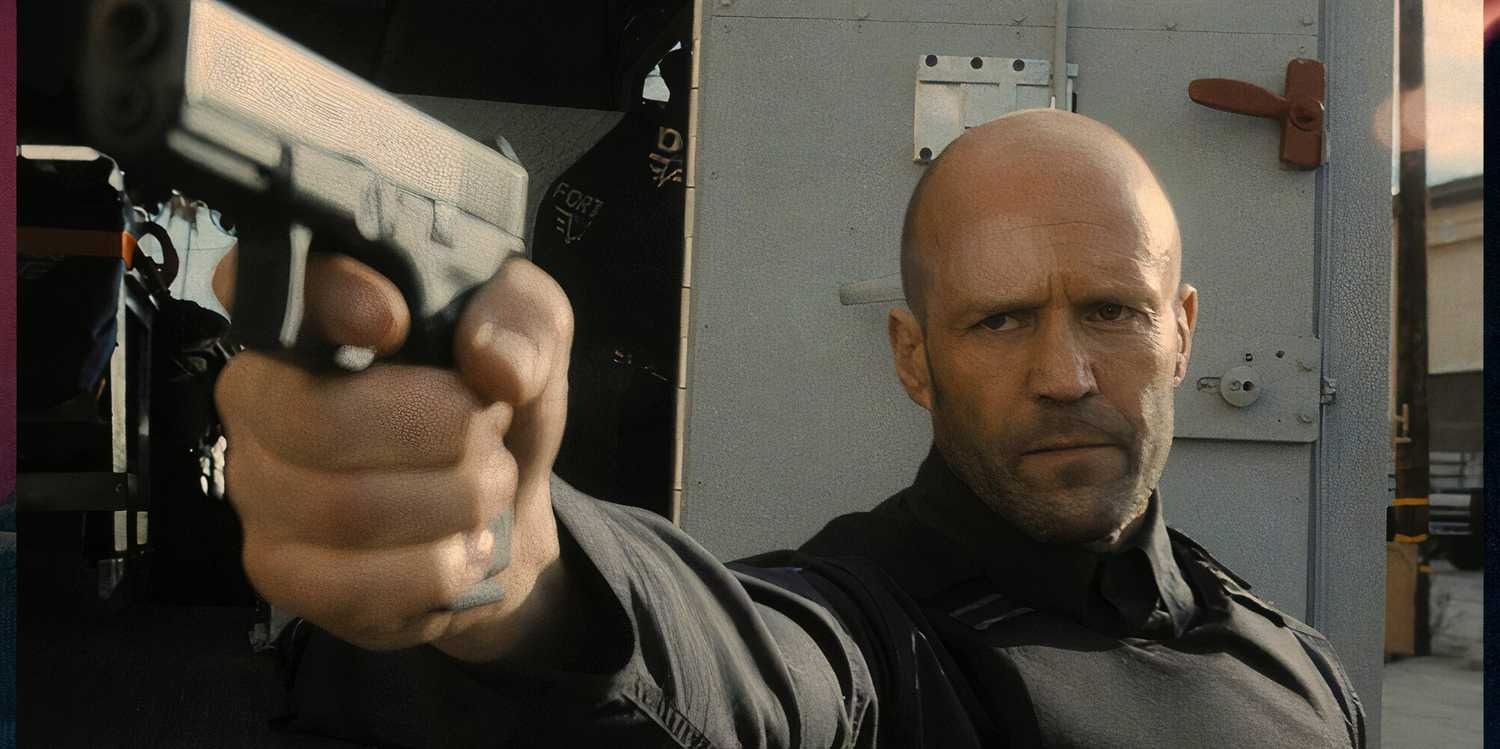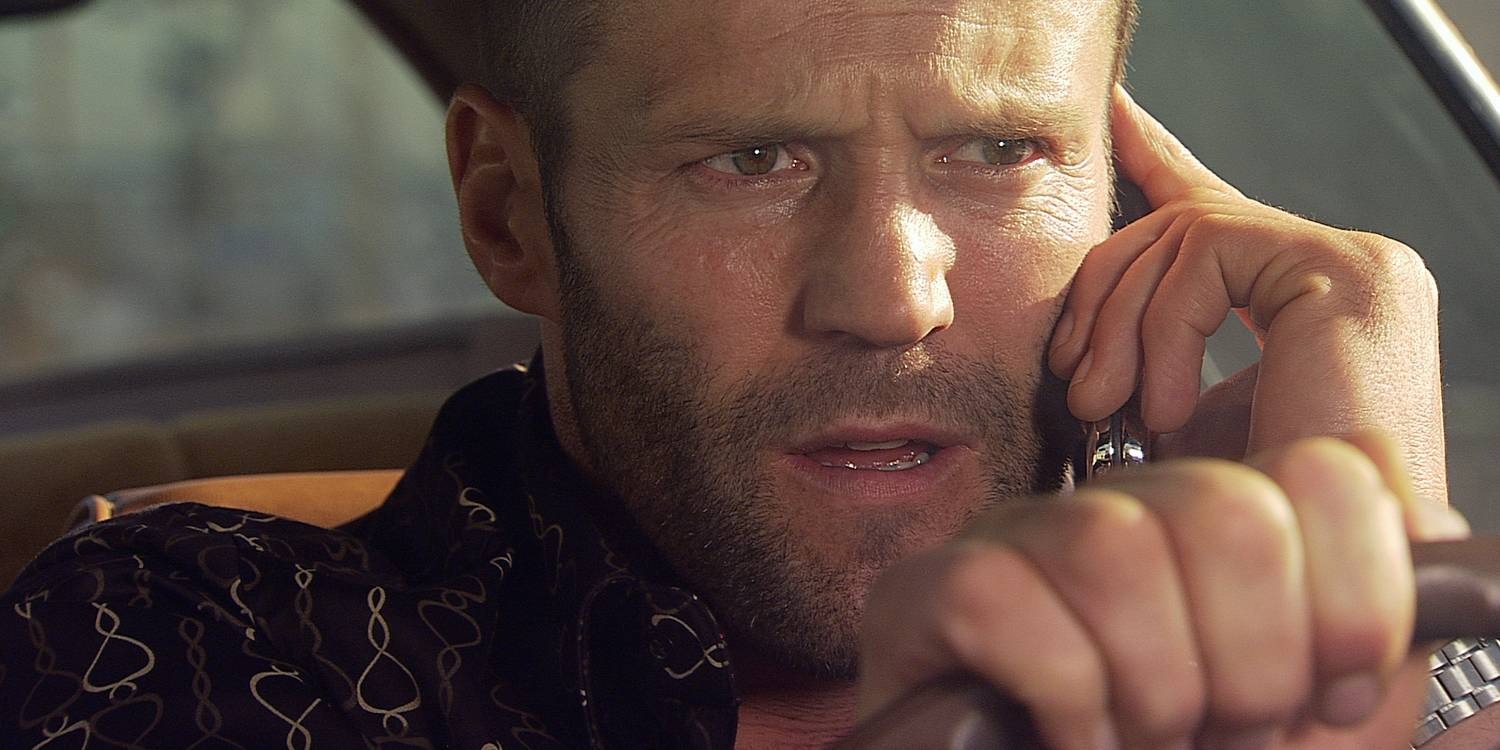Ever since his breakout performance in Guy Ritchie’s debut film Lock, Stock, and Two Smoking Barrels, Jason Statham has been using his magnetic screen premise to lead a wide variety of action films. Yes, sure, we know Keanu Reeves and Tom Cruise are killing it in the John Wick and Mission: Impossible franchises, but no other actor working today has shown the same level of commitment to the action genre as The Beekeeper star. Statham isn’t averse to appearing in absurd projects, but the 2006 action thriller Crank may be the most ridiculous film he’s ever been in. Directors Mark Neveldine and Brian Taylor certainly created a lot of visual ingenuity, but Crank was inspired by the classic neo-noir thriller D.O.A.
One of the endearing aspects of Statham’s run of action films is that he’s willing to jump into different subgenres. Between a spoof movie like Spy, a creature feature like The Meg, a spy caper like Operation Fortune: Ruse de Guerre, and a nihilistic revenge thriller like Wrath of Man, Statham has proven that action cinema doesn’t have to constantly reiterate itself. While its kinetic pacing and dark sense of humor make it feel decidedly modern, Crank uses the influence of noir films to show why the genre is still so accessible.

How Are ‘Crank’ and ‘D.O.A.’ Similar?
Released in 1950, D.O.A. served as the directorial debut of Rudolph Maté, an acclaimed cinematographer who had worked on such silent film classics as Vampyr and The Passion of Joan of Arc. D.O.A. centers on the novice accountant Frank Bigelow (Edmund O’Brien), whose vacation in San Francisco takes a dark turn when he discovers that he has been fatally poisoned. Recognizing that he has little time to live, Bigelow begins a bloody mission of vengeance in order to determine who poisoned him and why. Although it inspired a string of critically derided sequels and reboots, the narrative of D.O.A. served as a primary influence on Crank. D.O.A. isn’t officially cited in Crank’s credits, but the film’s status as a public domain film allowed future creators to use it as a source nonetheless.
Crank and D.O.A. are both about a doomed man trying to prevent his own death. In Crank, Statham’s character Chev Chelios is attacked by the hitmen Alex (Jay Xcala) and Ricky (Jose Pablo Cantillo) in his apartment and injected with a synthetic drug that slows the adrenaline pumping through his veins. Chelios’ only means of survival is keeping his blood pumping at an exorbitant rate so that he can find a way to excise the drug from his body. Like Bigelow, Chelios’ first thought is to get revenge on those that put him in such a position. As he desperately goes on a madcap adventure throughout Los Angeles, Chelios tries to track down the drug kingpin Carlito (Carlos Sanz) and execute him.

Both D.O.A. and Crank utilize the “ticking clock” narrative device to invest the audience in the character. It is clear that both Bigelow and Chelios have a finite amount of time to complete their missions, serving as an allusion to the unwinnable fight to avoid death. In both films, the life-or-death stakes serve as a great way of escalating the scale and scope of the film. In D.O.A., Bigelow starts off as a normal man before steadily turning into a dangerous hitman and amateur sleuth. Crank begins with Chelios as a dangerous criminal, but the film’s violent action only gets more absurd as his time starts running out.
Jason Statham’s ‘Crank’ Works Best as a Neo-Noir Thriller
It’s a film that is mostly Statham doing ridiculous things to keep his heart rate up, but Crank does a great job at intertwining its mystery elements. Statham is often at his best when he’s allowed to play an intelligent character who uses his problem-solving skills to outsmart his enemies. In Crank, Chelios is both trying to find a way to keep his body stable and link together the conspiracy involving Carlito and his gang. He may not have the level-headed tenacity of Humphrey Bogart’s Sam Spade or Elliott Gould’s Phillip Marlowe, but he does share their cynical outlook on humanity.

In addition to the investigation storyline, Crank recreates many archetypes common within the neo-noir genre. Amy Smart’s character Eve Lydon, the girlfriend of Chelios, essentially fills the “femme fatale” role that is featured in many classic hard-boiled detective stories. In many noir films, the setting itself is personified and becomes a character. Crank fleshes out some of the most iconic locations in Los Angeles in order to give the city a real personality. In some ways, Chelios is waging a battle against “the City of Angels” itself.
How Does ‘Crank’ Compare to Jason Statham’s Other Action Movies?
Compared to the other action films that he’s appeared in, Crank gives Statham an opportunity to add a dark sense of humor. Awkward attempts at comic relief may feel distracting in more serious action films like Parker or The Mechanic, but in Crank, there’s a reason the character is in such a paranoid mental state. There’s also a grimy, video game-esque visual hue within the film that makes it look distinct compared to other action thrillers.

Statham hasn’t had great luck when it comes to sequels, as The Expendables franchise and The Meg 2: The Trench fell well short of expectations. However, Crank 2: High Voltage was a highly entertaining sequel that managed to retain the first film’s dark sense of humor whilst continuing its homage to noir cinema. Action sequels are best when they are bigger and bolder, and Crank 2: High Voltage somehow managed to take the story in an even weirder direction than its predecessor.
Crank is available to watch on Max in the U.S